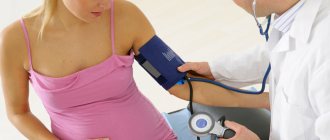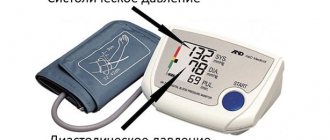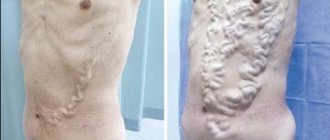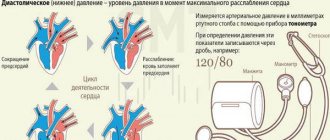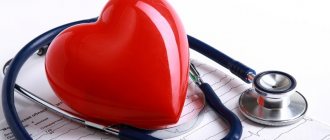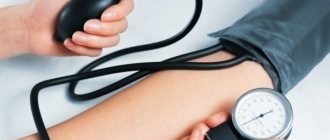Hypertension is a disease associated with increased blood pressure periodically or constantly. The reason is the narrowing of blood vessels. Blood puts more pressure on the walls of the arteries, and the heart requires more effort to circulate blood. Hypertension is a fairly common disease, manifested by the following symptoms:
- discomfort in the heart area, burning;
- headaches (temple area), dizziness;
- increased sweating;
- chills of the body, limbs;
- feeling of fear, panic.
Increased sweating is one of the symptoms of hypertension
Hypertension causes a lot of difficulties for the patient. Prevention of hypertension:
- moderate physical activity;
- rational healthy diet;
- limiting bad habits: smoking, drinking alcohol;
- excess weight loss.
What happens during the flight?
Due to the fact that at high altitudes the air is more rarefied, the atmospheric pressure decreases and the microclimate changes. At this time, changes also occur in the human body. The blood vessels and heart muscle become toned, which can increase blood pressure. In a healthy person, this condition does not cause concern, but for people with cardiovascular pathologies it is a risk of developing complications.
During a flight, especially if it is the first one, some people experience fear, and this is an additional burden on the body
In addition, during an airplane flight, active production of adrenaline begins. Its excess in the human body leads to rapid heartbeat, impaired respiratory function, anxiety and increased blood pressure. While on an airplane at high altitude, a person’s well-being may deteriorate. In this case, the following violations are noted:
- Feeling of chest tightness;
- Labored breathing;
- Pressing headaches;
- Numbness of the limbs;
- Increased anxiety;
- Nausea and dizziness;
- Increased sweating.
This condition is dangerous for a person with arterial hypertension and can lead to a heart attack and hypertensive crisis, including a complicated form with a fatal outcome.
Note. An increase in blood pressure by 10-20 units for a healthy person, as a rule, does not bring severe discomfort.
With hypertension, the indicators rise even by 5 mm. Art. can become critical. Therefore, before planning an air flight, it is worth weighing the pros and cons.
Effect on blood vessels
Flying by plane has a great advantage over rail travel in the shortest possible delivery time to the destination. The only inconvenience is that a patient with hypertension has to sit in one place for a long time. Due to changes in pressure on board, with limited mobility of movement, spasm of the vessels of the lower extremities is observed, leading to their swelling. The risk of a heart attack increases, blood circulation and muscle trophism worsen. The viscosity of the blood increases, the vessels narrow, and the risk of blood clots increases with further detachment of the blood clot from the walls of the vessel.
Attention! Before the flight, you need to consult a cardiologist who will give the necessary prescriptions.
Can hypertensive patients fly on an airplane?
Hypertensive patients can fly on an airplane if the disease is mild and the upper blood pressure does not rise higher than 140-150 mm. RT Art. In this case, the person should feel comfortable and not be bothered by any symptoms, for example, headache, nausea, dizziness, tachycardia and others. If hypertension is accompanied by poor health, then air travel is strictly prohibited.
It is also important to take into account that flying on an airplane is stressful for the body. People with good self-control easily cope with panic during takeoff and landing, so their nervous system and heart do not suffer. With people who belong to the “alarmists” group, the situation is different.
A state of panic is easily transmitted to other people, and yet dozens of people are flying on the plane
If a person does not have self-control and cannot suppress the feeling of panic, then it is better not to use the services of airlines. Because during an air flight a heart attack can occur, which often leads to death. It is also worth considering the effectiveness of the prescribed therapeutic measures.
If, when blood pressure rises, medications quickly bring blood pressure back to normal, then the risk of complications is low. If treatment is ineffective, you should not rise high above sea level, since if your blood pressure rises, it will not be possible to quickly normalize it. This again leads to the development of dangerous pathologies.
Absolute contraindications
A patient with hypertension should approach flights with full responsibility. It is not recommended to use air transport for patients with the following pathologies:
- arterial hypertension 2 and 3 degrees;
- atherosclerosis;
- phobias of air travel and heights;
- excess body weight.
It is also worth using trains and buses for people who have had a heart attack or stroke and who cannot cope with their fears.
Hypertensive people who are overweight or have atherosclerosis are most susceptible to extreme increases in blood pressure at high altitudes.
Diseases and conditions under which it is dangerous and completely prohibited to use airline services:
thrombophlebitis;
· long periods of pregnancy;
· angina pectoris;
· asthma;
· varicose veins;
· recent heart surgery.
If contraindications are ignored, the patient may develop a number of complications during the flight that can lead to death.
In this regard, it is recommended that the passenger use ground transport, which does not affect blood pressure levels.
When is flying prohibited?
People with high blood pressure and pathologies such as:
- Mental disorders;
- Bronchial asthma of any form;
- Thrombophlebitis and thrombosis;
- Hypotension at increased risk;
- Pulmonary hypertension;
- Acute heart failure;
- Angina or ischemia;
- Atherosclerosis of the second degree and higher;
- Diseases of the respiratory system in chronic and complicated form.
It is also not recommended to fly immediately after a hypertensive attack, during the rehabilitation period after chest surgery, in cases of increased obesity and endocrine system disorders.
Who is contraindicated from flying?
There are also contraindications to flying on an airplane. These include the following conditions.
Cardiovascular diseases - airplane travel is not recommended:
- unstable angina, chest pain at rest;
- previous myocardial infarction: uncomplicated – up to 2 weeks, complicated – up to 6 weeks;
- decompensated heart defects;
- decompensated heart failure;
- treatment of uncontrolled hypertension (score greater than 200) or ventricular arrhythmia.
Respiratory diseases - airplane travel is not recommended:
- shortness of breath at rest or cyanosis;
- severe COPD or its exacerbation;
- active bronchospasm;
- unresolved pneumothorax;
- pneumonia, ARVI;
- large pleural effusion.
Nervous and mental disorders – airplane flight is not recommended:
- treatment of uncontrolled epilepsy;
- cervical hypertension;
- psychotic states (necessary support and reassurance).
Infectious diseases - airplane travel is not recommended:
- any serious acute illness with the potential for transmission to a travel companion, including active tuberculosis.
Surgical procedures – airplane travel is not recommended:
- condition after surgery on the chest or abdominal cavity (less than 10 days ago);
- condition shortly after gastric or intestinal bleeding;
- pneumothorax that occurred less than 7 days ago.
Diseases of the ear, nose and larynx - airplane flight is not recommended:
- acute inflammation of the middle and lower cavities;
- conditions after surgery on the middle and inner ear.
Blood diseases - airplane travel is not recommended:
- anemia with a hemoglobin level of less than 75 g/l.
Female conditions - airplane travel is not recommended:
- pregnancy after 35 weeks;
- week of the postpartum period.
Eye diseases - airplane travel is not recommended:
- diabetic retinopathy, retinal hemorrhage;
- cataract surgery less than 4 weeks ago.
Kinetosis
Kinetosis is a set of symptoms and discomfort that affects passengers when traveling by various modes of transport, including when flying on an airplane. The disease occurs when the speed of movement in the direction of movement changes (starting, sudden deceleration, taking off or landing of an airplane, rocking a boat on the surface of the water, moving on a camel, elephant, etc.). This is the result of an imbalance between the perception of movement through vision and the balance center of the inner ear.
The disease is accompanied by nausea, vomiting, and dizziness. Breathing accelerates, excessive saliva production occurs, increased sweating occurs, and blood pressure decreases. Kinetosis is more common in women, in children aged 4–10 years, in people prone to migraines. People prone to kinetosis should consult their doctor about taking appropriate medications before flying.
How to prepare for a flight?
Before purchasing an air ticket, you should make sure that you are prepared for the flight. To do this, it is necessary to monitor blood and pulse pressure several days before the planned trip. If the indicators are unstable and the person’s well-being is deteriorating, then it is better to refuse the flight.
It is better to do an electrocardiogram of the heart 7-10 days in advance and consult with a doctor about the possibility of air travel. In addition, you must:
- Go out for evening walks more often and breathe fresh air;
- Spend more time resting and getting enough sleep;
- Switch to a low-calorie diet in advance to prevent stress on blood vessels;
- If possible, perform a set of physical exercises;
- Do breathing exercises 2-3 times a day (daily).
Calming drops before a flight will not be superfluous for a healthy person
Additional measures when traveling by plane
If you suffer from high blood pressure, heart disease or vascular disease, be sure to take your blood pressure medications that you usually take on board. Consulting a doctor before flying is always appropriate for people suffering from certain chronic health conditions; It is also necessary if your health problems are new.
If you've recently been diagnosed with hypertension (your blood pressure tends to rise), it's a good idea to see your doctor before flying because high blood pressure is dangerous in itself and can cause complications whether you're traveling or not.
Important! If you have had a heart attack, stroke, or abdominal surgery, you may want to postpone your plane ride and not plan to travel by air without your doctor's advice.
Hypertension and the airplane
A person with hypertension and an airplane may be incompatible if before the flight the person’s health suddenly worsened or their blood pressure increased significantly. In this case, it is better to postpone the flight or use another type of transport.
If it is impossible to postpone air travel on this day, then you should at least try to change your ticket to a later time. Until your health returns to normal, you should not take to the air - this is fraught with dangerous consequences.
It is important to understand that you can receive qualified assistance only after the plane lands. The crew does not provide a doctor on board the aircraft
What to do if a crisis occurs
Every plane has a first aid kit!
For hypertensive patients, oxygen inhalations are a must! Before your flight, do not forget to check whether there are special oxygen bags on board. If the airline doesn't have them, order one for yourself in advance.
In any case, a patient with high blood pressure should take with him on the flight a first aid kit with the necessary medications (capaten, validol, corvalol, valerian).
In the worst case scenario, the plane may land at the nearest airport, where assistance will be provided by qualified doctors.
What to do during the flight?
You shouldn’t concentrate on altitude; it’s best to distract yourself and read a book, interesting magazines, solve crosswords or listen to soothing music through headphones. Throughout the trip, it is recommended to drink water in small sips frequently.
If you have a fear of heights, you should not sit by the window; it is better to choose a place closer to the entrance and take the most comfortable position. To avoid overloading the blood vessels, do not cross your legs. It's better to stretch both legs and relax.
In addition, to avoid swelling, you need to regularly bend and straighten your limbs, as well as change your body position. If possible, then every 30-40 minutes you need to get up and take slow walks on board the plane.
If during the flight your health suddenly worsens, you should contact the flight attendant as soon as possible. Flight attendants are trained in the rules of first aid for various pathologies, so they can quickly navigate and alleviate the condition of a hypertensive patient.
Symptoms of changes in the body
Rising to a high altitude in an airplane, a person quickly finds himself in conditions of rarefied air and low pressure. The body feels discomfort and begins to fight it. External signs:
- pawns ears,
- lump in throat and constant desire to swallow,
- heart rate increases,
- headache,
- difficulty breathing,
- spasm in the stomach,
- nausea and vomiting.
Drinks offered by flight attendants immediately after gaining altitude, sweets with ascorbic acid, reading newspapers and programs on the monitor help overcome these symptoms.
By opening the mouth and swallowing, the passenger equalizes the air pressure inside the body, bringing it closer to the outside. Moisture also enters the respiratory system. Sweets activate the production of enzymes in the stomach for processing food and reduce muscle contraction.
Proper preparation for the flight
There are a number of rules that can help reduce stress on the cardiovascular system and minimize the likelihood of negative consequences. Recommended actions:
- For your flight, choose an airline that equips its aircraft with oxygen bags. Or you can take your own - a doctor must give permission to fly with medical supplies to maintain health.
- Carry with you the medications that the patient usually uses for treatment. Before taking off, Validol should be placed under the tongue to reduce anxiety and stabilize the condition.
- For angina pectoris, you can take 1 tablet of Nitroglycerin and Aspirin. This will reduce the risk of a heart attack.
- It is advisable to fly not by yourself, but with a loved one. If your health worsens, his support will help alleviate the condition.
- To calm the nervous system, it is recommended to take valerian.
- To distract yourself from anxious thoughts, you can listen to music on headphones or read something.
To reduce the negative effect on the blood vessels, it is not recommended to place one leg on the other or bend them, which can compress the blood vessels. The recommended position is sitting, leaning on the back of a chair, with your legs straight. If possible, it is advisable to sit near the aisle. For normal blood circulation, it is useful to walk around the aircraft cabin at least once an hour. To avoid blood stagnation, do a warm-up for the neck and limbs in a chair.
Video on the topic
About the effect of high and low atmospheric pressure on hypertensive patients in the video:
The safest type of transport will be a comfortable and reliable companion for a hypertensive patient only with the right approach. Following the recommendations when preparing for a flight, a preliminary medical examination and careful monitoring of blood pressure will make your trip absolutely harmless.
The information on the MyMedNews.ru website is for reference and general information, collected from publicly available sources and cannot serve as a basis for making a decision on the use of medications in the course of treatment.
MyMedNews.ru
And we also have
Different uses of email indicate a person's individuality
